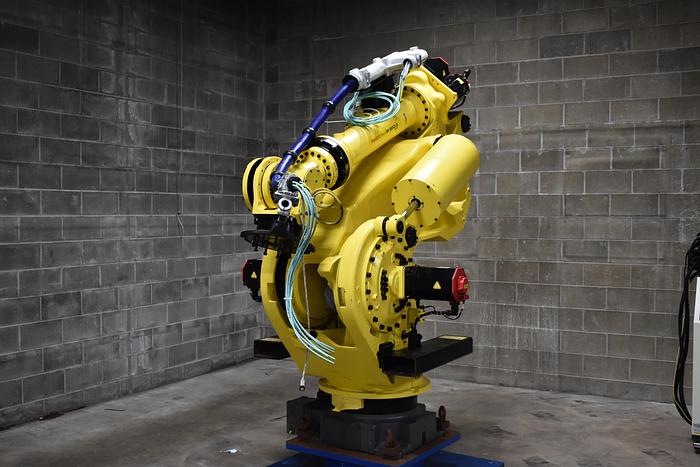High Payload Robots
Payload is one of the key defining characteristics of an industrial robot. It measures the maximum load capacity that a robotic wrist can support. Robotic payload not only refers to the weight of workpieces a robot can handle, but also the weight of any end-effectors integrated with a robot. When selecting an industrial robot, it is important to consider the maximum payload needed as it will likely determine what applications and workpieces a robot can handle. If an industrial robot’s payload is too light, the robot or workpieces could become damaged and the application may fail. While too heavy of a payload can hamper a robot’s operation.
Industrial robots vary greatly by payload capacity. There are low payload robots for light lifting, medium payload robots, and high payload robots. High payload robots typically have payload capacities of 200 kg or higher. There are high payload articulated robots capable of handling well over 1,000 kg. The definition of a high payload robot can vary by robot manufacturer and has changed over the years. Years ago, high payload robots were defined as being able to handle weights between 100 kg to 150 kg, but as robots have advanced so have their lifting capacities.
Most high payload robots are larger in size for the ability to handle heavy workloads, but this is not necessarily always the case. FANUC’s R-2000i series is one of their most successful since they were one of the first to feature a slimmer profile and footprint without sacrificing payload. Manufacturers with limited floorspace were able to automate heavy lifting applications with robots from the R-2000i series. The FANUC R-2000ia/165F was the original R-2000i robot and since its inception three additional generations have been developed with each featuring an improvement to the robotic footprint. The latest generation, the R-2000iD series, features a footprint that has been reduced by 23% from the previous R-2000i line. The FANUC R-2000ib/210F from the series features a payload of 210 kg, making it ideal for those needing a heavy payload, but do not have much floorspace to spare.
High payload robots are replacing single purpose lifting machines across many industries including the automotive, aerospace, and heavy equipment industries. High payload robots provide manufacturers with the ability to handle heavy parts like traditional lifting machines but with the bonus of versatility. High payload robots can automate a variety of applications from material handling to spot welding to palletizing among many others. Unlike other manufacturing equipment, they can be repurposed and used to automate different applications should production processes change. Other lifting equipment is only single purpose, lacking the ability to adapt to application changes. High payload robots provide heavy lifting power and manufacturing flexibility.
